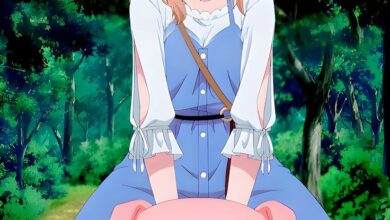The Bavarian Roots of Oktoberfest and Lederhosen Shorts

Oktoberfest and lederhosen shorts are deeply intertwined with Bavarian culture, offering a glimpse into the rich history and traditions of this southern German region. From their origins to their present-day celebrations, both Oktoberfest and lederhosen shorts embody the spirit of Bavaria. Lederhosen shorts, a shorter version of the traditional Bavarian leather trousers, are a stylish and versatile piece of attire. Typically made from high-quality leather, these shorts feature intricate embroidery and sturdy construction, offering both durability and comfort. Perfect for warm weather and active events, lederhosen shorts retain the cultural authenticity of their full-length counterparts while providing a more casual and relaxed fit. Ideal for festivals like Oktoberfest, as well as outdoor gatherings and casual outings, Lederhosen Shorts blend tradition with contemporary fashion, making them a popular choice for those looking to celebrate Bavarian heritage with a modern twist. This article explores the roots of these iconic symbols, delving into their historical significance, cultural impact, and continued relevance.
The Origins of Oktoberfest
Oktoberfest, the world’s largest beer festival, traces its roots back to October 12, 1810, when Crown Prince Ludwig (later King Ludwig I) married Princess Therese of Saxe-Hildburghausen. The citizens of Munich were invited to join the royal festivities, held in the fields in front of the city gates, which were later named Theresienwiese (Theresa’s Meadow) in honor of the princess. The celebration included horse races, marking the beginning of what would become an annual tradition.
Initially, Oktoberfest was a simple, local event centered around agricultural shows and horse races. However, it quickly grew in popularity and complexity, incorporating beer stands, food stalls, and various forms of entertainment. By the late 19th century, Oktoberfest had evolved into a major festival with large beer tents, amusement rides, and musical performances.
The Cultural Significance of Lederhosen
Lederhosen, meaning “leather trousers” in German, are traditional Bavarian garments that have been worn for centuries. Originally designed for hard-working peasants and hunters, lederhosen are made from durable leather, typically from deer or goat, and are known for their ruggedness and practicality. The trousers often feature intricate embroidery, adding an element of artistry to their utilitarian design.
Lederhosen were an essential part of everyday life in rural Bavaria, providing protection and comfort during physical labor. They were also worn during festivals and special occasions, symbolizing Bavarian identity and pride. Over time, lederhosen became a cultural icon, representing the values of resilience, craftsmanship, and tradition.
Oktoberfest and Lederhosen Shorts: A Perfect Pairing
The connection between Oktoberfest and lederhosen is a natural one, as both celebrate Bavarian heritage. Wearing lederhosen to Oktoberfest has become a time-honored tradition, allowing attendees to immerse themselves in the festive atmosphere and pay homage to Bavarian culture. The sight of men in lederhosen, paired with traditional checkered shirts, knee-high socks, and sturdy boots, is synonymous with the Oktoberfest experience.
Lederhosen are not just worn by locals; visitors from around the world embrace the tradition, donning the attire to fully participate in the festivities. This global embrace of lederhosen at Oktoberfest highlights the universal appeal of Bavarian culture and the festival’s role in promoting cultural exchange.
The Evolution of Oktoberfest and Lederhosen
While Oktoberfest and lederhosen are steeped in tradition, both have evolved to reflect contemporary trends and preferences. Modern Oktoberfest has expanded to include a wide variety of beer tents, offering everything from traditional Bavarian brews to international craft beers. The festival also features diverse food options, carnival rides, games, and live entertainment, catering to a broad audience.
Similarly, Bavarian Clothing has undergone transformations to suit modern tastes. Contemporary designs incorporate new materials, colors, and styles, while still honoring the traditional craftsmanship and aesthetics. Lederhosen are now available in a range of lengths, from the classic knee-length to shorter variations, and are often paired with fashion-forward accessories such as stylish suspenders and embroidered belts.
The Global Impact of Oktoberfest and Lederhosen

Oktoberfest has grown far beyond its Bavarian origins, with celebrations taking place in cities around the world. From Munich to Sydney, from Denver to Tokyo, Oktoberfest events draw millions of participants eager to experience Bavarian culture. These international festivals often feature authentic Bavarian beer, food, music, and, of course, lederhosen.
The global popularity of Oktoberfest and lederhosen has helped preserve and promote Bavarian traditions, ensuring they remain relevant and cherished. This cultural export has also fostered a sense of global community, as people from diverse backgrounds come together to celebrate and appreciate Bavarian heritage.
The Future of Oktoberfest and Lederhosen
As Oktoberfest and lederhosen continue to evolve, they will undoubtedly retain their core values and cultural significance. Future iterations of Oktoberfest will likely incorporate new technological advancements, sustainability initiatives, and diverse entertainment options, while still honoring the festival’s historical roots.
Lederhosen, too, will continue to adapt to contemporary fashion trends, ensuring they remain a beloved and iconic garment. Whether worn at Oktoberfest, weddings, cultural festivals, or themed parties, lederhosen will always symbolize Bavarian pride and tradition.
Conclusion
Oktoberfest and lederhosen are integral components of Bavarian culture, each with a rich history and enduring significance. From their humble beginnings to their current status as global phenomena, both Oktoberfest and lederhosen embody the spirit of Bavaria, celebrating its heritage, craftsmanship, and community. As these traditions continue to evolve and captivate audiences worldwide, they will remain cherished symbols of Bavarian identity, bringing people together in a shared appreciation of culture and festivity.



